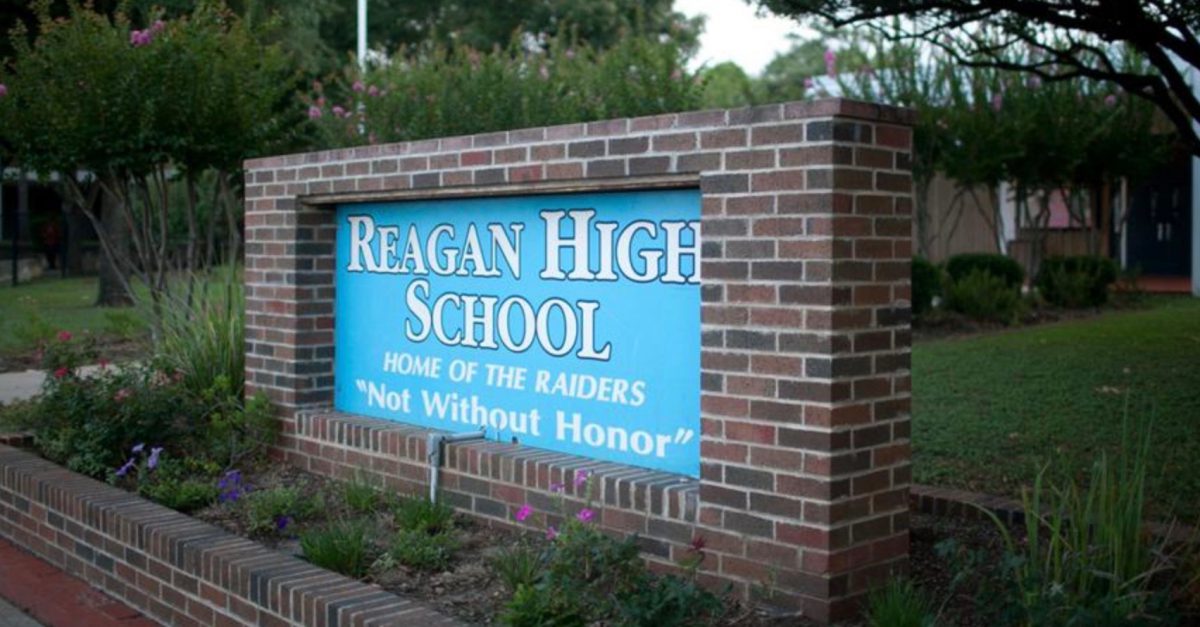By Melissa B. Taboada – American-Statesman Staff
Videos by Rare
A split vote is expected Monday night as the Austin school board decides whether to remove Confederate names from five campuses.
At least five of trustees, the minimum needed to move the measure forward, have expressed support for the measure. But others on the board continue to raise concerns about the name changes, saying the board’s action on the matter has felt very top-down because it was not prompted by a call from community members, as was the case in 2016 when the board renamed the former Robert E. Lee Elementary.
RELATED: The debate on Confederate-named schools is rising again in Texas’ capital
The school board is considering renaming the following five campuses:
• The Allan facility (the former Allan Elementary), named for John T. Allan, an officer in the Confederate army.
• Reagan High School, named for John H. Reagan, the Confederacy’s postmaster general.
• Eastside Memorial High School at the Johnston campus, which is named for Gen. Albert S. Johnston.
• Lanier High School, named for Sidney Lanier, a noted poet who fought for the Confederacy.
• Fulmore Middle School, named for Zachary Taylor Fulmore, a private in the Confederate army.
At least three of the Austin schools bearing names of Confederates were given their names during the civil rights movement, after the federal court-ordered desegregation of public schools. At the time, many buildings were being named after Confederate war heroes across Texas and the South.
At a community forum last week on the issue, Carment Kiara, a former student and retired teacher at Reagan High School, said during small group discussions that, as a student, he hadn’t realized for whom the school was named. He lauded several discussion members at the table, who were white and who supported the change, so that Kiara, as a black man, felt like he wasn’t alone in the fight.
“With the defeat of the Confederacy, the condition of the African-American began to change for the better,” he said. “There were a lot of people in the South that weren’t ready then, or now, to accept those changes and did everything possible to preserve that old way of life. … There are more people deserving of such an honor of having a school named after them.”
But others, including Reagan High alumna Charlsa Bentley, feared there will be less support for the school from alumni, who have donated to different programs, because they won’t identify with the new name and will no longer feel a connection to Reagan in the future.
“Reagan has a storied past. We were Reagan — not John H. — just Reagan,” Bentley said, recalling the state football championship the school won while she was a senior. “Ten to 15 years from now, when someone starts fundraising for ‘Smith High School,’ but it’s the Reagan community … there won’t be the same connections.”
Derek Alderman, a cultural geographer at the University of Tennessee-Knoxville who studies race, public memory and places, said a “name becomes a carrier of heritage, a carrier of identity.”
“The name of schools, the symbols used by the school, are part of the hidden curriculum,” Alderman said. And daily exposure to the name does “communicate to the student why the name and history is important.”
Alderman said any renaming shouldn’t be the end of the conversation, but the start of a larger project that examines and educates about the historical and political origins of the named buildings, moving toward social justice and reparative work.
More often, however, political leaders rename schools or buildings for generic, sanitized and noncontroversial figures, he said. Some critics accused the Austin school board of doing such when it changed Robert E. Lee to Russell Lee, after a critically acclaimed Depression-era photographer and a founder of the University of Texas photography department. Others had advocated it be named for Betty Mann, the first black teacher to teach at the Lee campus. The board instead named the kindergarten wing after Mann.
The associated costs for one secondary school to change marquee and building signage and the name on gym floors among other things, could total $77,000, plus the cost of new sports and band uniforms, according to district documents.
Multiple students and alumni from the schools being considered for name changes have come out against name changes, criticizing the board for prioritizing the issue and saying the district could better spend the money elsewhere.
RELATED: Do you support the decision Six Flags Over Texas just made about flying this flag?
Monday night’s board is expected to be standing-room-only, and high on emotion, with statements from parents, students and community members on both sides of the issue. Trustees in recent months have also clashed over the subject.
Other school districts, including Dallas, Houston and San Antonio, have approved changing the names of schools with Confederate ties.
If you go
The Austin school board meets beginning at 7 p.m. Monday in the board room at the district’s administration building, 1111 W. 6th St.
© 2018 Cox Media Group.
Split vote likely on removing Confederate names from Austin schools https://t.co/nKhaNK1LqS pic.twitter.com/MIz7gL1tJa
— Austin Statesman (@statesman) February 25, 2018



